SOMPO’s Purpose

Special Three-Way Discussion on SOMPO’s Purpose Management:
The Driving Force for Realizing Our Purpose
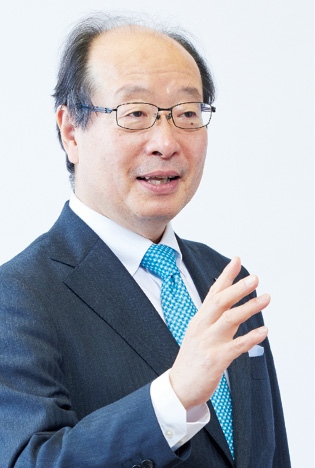
Takashi Nawa
Outside Director, Member of the Nomination Committee and the Compensation Committee
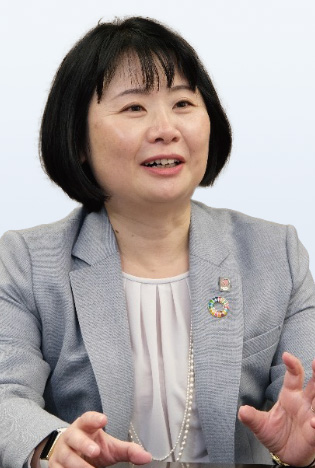
Ryoko Shimokawa
Group CSuO
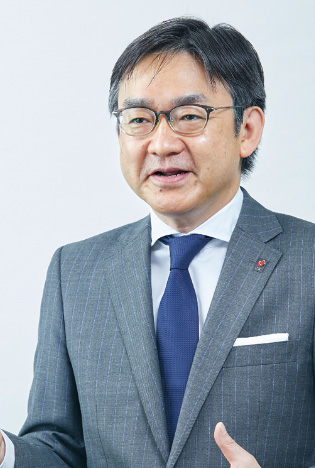
Shinichi Hara
Group CHRO
Defining Purpose Management
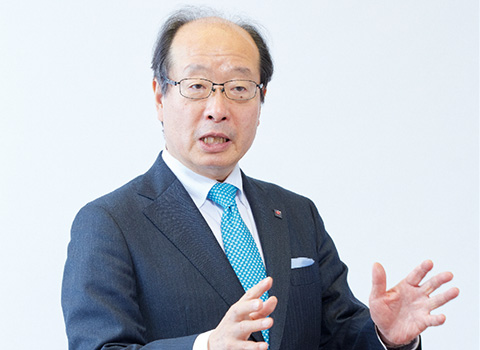
Nawa When I say purpose, I am referring to aspirations rather than the rigid concept of a reason for existence. As the Japanese character for aspiration suggests, this is the samurai spirit. Bushido (the warrior’s code), as our Group CEO, Mr. Sakurada wrote in his book Bushido Capitalism, is the epitome of the spirit of the Japanese people, and if aspiration is in the minds of people seeking the path forward, then purpose is the inner conviction to seek and follow that path. Mission is a commonly used word that is more like a moral cause, and it is often accompanied by a sense of obligation. Purpose and aspiration come from within and represent a proactive desire to do something. I think it depends largely on whether these are intrinsic or extrinsic. For a company to place ambition firmly at its center, aspiration must satisfy three requirements for empathy: it must be exciting; it must be unique; and customers and employees must believe in it. This is what I am advocating with regard to purpose.
Shimokawa SOMPO’s Purpose is our ambition. Our ambition is the basis for our move toward realizing our future. SOMPO’s Purpose is built on our vision of sustainable growth by providing value over the next 100 years and for gaining the empathy of our stakeholders for that vision. We refer to initiatives that achieve our ambition as the Value Creation Cycle. Our unique features are our people and that we count nursing care and digital services among our lines of business, along with insurance.
The Value Creation Cycle places SOMPO’s Purpose and My Purpose together at the center, with employees driven by their My Purpose to repeatedly take on the challenge of achieving SOMPO’s Purpose in their own way, therefore serving as the driving force behind the company’s growth (see the figure, left). This driving force will then improve products and services in existing lines of business—insurance and nursing care—and deliver solutions for the future (figure, bottom right). This will help the company create even more new value through synergy and co-creation that come from diverse, robust lines of business (top right). The continuous creation of value through this three-part cycle, the Value Creation Cycle, is distinct to SOMPO, and realizing each part and sharing the results is what makes up our Purpose Management.
Professor Nawa mentioned that ambition must be exciting. Speaking of excitement, I think that being a “Theme Park for Security, Health and Wellbeing” corresponds well with the “18th” SDG goal. Our ”theme park” is a place that transforms security, health, and wellbeing into tangible forms that can be seen and touched. Further, while insurance is a just-in-case service with the main value being that negatives are balanced out to zero when the worst happens, we also want to create a lot of positive value and happiness. That is what we intend to provide with the concept of the theme park, and what we must continue to build on going forward. I also believe that My Purpose is what makes our ambition unique, the source of excitement, and is an intrinsic part of us.
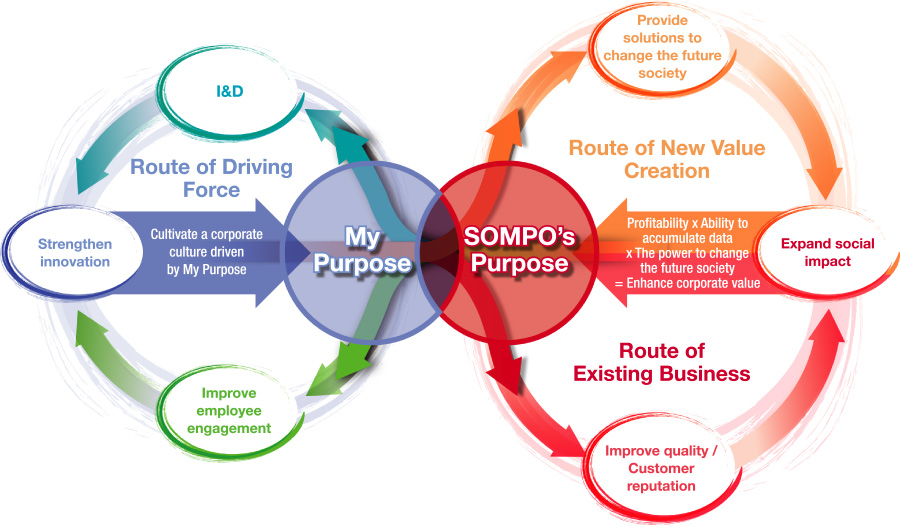
Hara What sets us apart is that we are trying to become an autonomous group based on the pursuit of My Purpose, the foundation of our human resource and management strategies. We have a model of SOMPO’s Purpose, but we do not take the approach of forcing employees to fit into that model. We want to achieve SOMPO’s Purpose by having them start with their My Purpose and through hundreds and thousands of ways they can integrate with SOMPO’s Purpose.
Reading Professor Nawa’s book on Joseph Schumpeter recently gave me confidence that this approach is correct. The part in the book where the great Yoshida Shoin asked his students, “What is your ambition?” left a deep impression on me. Innovation originates with our internal thoughts, not from the external environment. Entrepreneurs must change from people who observe to people who act, and the source of that change is ambition, or purpose. I was profoundly impressed by this realization.
Nawa SOMPO’s Purpose is our North Star, an abstract concept. I think the correct course of action is for each of us to take it upon ourselves to pursue our My Purpose. However, between the company and individuals are the departments and groups to which they belong, so unless the purposes are integrated, it is difficult to develop a sense of where individual actions fall in the “Theme Park for Security, Health and Wellbeing.
Broadly speaking, there are three levels of purpose: companywide purpose, the purpose of a department or organization, and My Purpose. First, the companywide purpose is mutually understood within departments, and is the force that binds them all together. When everyone’s ideas as individuals are integrated into departments and groups, they come together to form an even larger group: SOMPO. I think it is important to know how to elicit and integrate the purposes of an organization. It seems to me it is difficult for a holding company to figure out how to create purpose for each department and group, but are we working on any creative solutions?
Shimokawa SOMPO’s Purpose is a medium- to long-term aim that can’t be realized immediately, and certainly there is distance between it and My Purpose for 74,000 people, but I believe that each line of business has its own ideas and purpose based on SOMPO’s Purpose, and that these are firmly connected to the missions of each department and group.
However, it is also true that in the real world, each workplace tends to put purpose aside and focus on the month’s sales or other immediately achievable figures. That is why the leaders of each workplace—the people between individual employees and the company—are so important. The key is how they can connect My Purpose to the company and our organizations, then unite them as an organizational force. For that reason, through Town Hall Meetings with Group CEO Sakurada, we are moving past getting 74,000 people to find My Purpose, and are holding Group-wide discussions among the leaders to determine how to create an organizational force by uniting the individual forces rooted in My Purpose.
Hara In a message to all employees this April, Sompo Japan’s President Shirakawa explicitly mentioned his My Purpose. Although how the company will integrate My Purpose-based management with sales and performance is an issue we will need to be clarified, I think it is epic that the president himself communicated that My Purpose is not a frivolous exercise, but is at the core of the management strategy.
Keys and Driving Force of Purpose Management
Nawa Inclusion and Diversity (I&D) is a phrase that appears in the Value Creation Cycle. I think the idea of everyone succeeding while thinking for themselves is similar to diversity. Unless it is predicated on inclusion, everyone’s thoughts will point in different directions, making it impossible to unite to power the organization. So, it is extremely important to have purpose to drive us forward with certainty. I believe that when each organization’s purpose is included within the Group’s overall purpose—creating a “Theme Park for Security, Health and Wellbeing—we will transform into a very powerful organization. Another difficulty is capturing the “value of multiplication.” To accomplish this, individual and organizational purposes must be reorganized and broken down. This organizational movement back and forth between separation and unification is both necessary and challenging. It is like the relationship between differentiation and integration: if you do nothing but integrate, things feel forced, but if you do nothing but differentiate, everyone is acting on their own. Finding the balance is extraordinarily difficult for a conglomerate like the Sompo Group, but I think it will be highly valuable quality once that balance is achieved.
Shimokawa Having My Purpose is a reaffirmation of employee diversity, a process of awakening the individual. However, inclusion is necessary to make diversity work and to avoid situations where people go on a journey of self-discovery and never return.
Looking at the Sompo Group as a whole, where we are leveraging centrifugal force to run our four major businesses, we are working to figure out how to use centripetal force as a holding company to bring the businesses together and create synergy within the Group. There are spillover effects in both directions between insurance and nursing care in addition to the pursuit of best practices in P&C insurance in Japan and overseas. It is clear that we are repeatedly employing initiatives to advance both diversity and inclusion as well as to channel them into power at many levels of the organization.
Hara We are currently working to make P&C insurance more efficient by looking at it from the perspective of the Group and the Group’s overall portfolio. It is important for a holding company to use a higher perspective to gain an overview to find and cultivate the potential for inclusion, in contrast to the centrifugal force that worked in the past.
Nawa Schumpeter defined innovation as new combinations, but I think of innovation as different combinations. I think that encapsulates I&D perfectly. No value is created unless things are different or “at the edge.” So, first, it is important for each element to be different and for us to be aware of the differences. However, the fact that things are different does not result in new combinations, so each element must be “at the edge” in some way, and then combined. That is innovation, and I&D is the driving force in every sense. The act of everyone becoming aware and then coming together as a team is crucial for creating innovation. In that sense, I feel that the key to innovation is repeating the process of awakening people to their My Purpose and then coming together as a team.
Shimokawa One objective of the My Purpose initiative is to create a culture that will perpetually generate innovation and pioneering effort. Starting with My Purpose generates pioneering efforts and innovations that increase the organization’s power and lifts up the company. To achieve this, we need intrinsic I&D to help create our growth strategies.
SOMPO’s Unrealized Financial Value
Nawa I hope that the Value Creation Cycle can be improved in this area and encourage everyone’s actions so that we can create new value. The source of SOMPO’s value is people, and once we have a firm understanding of how productivity and creativity can be improved by increasing motivation or “putting a charge” into My Purpose, I think we will be able to see the link or the causal relationship: My Purpose leads to output.
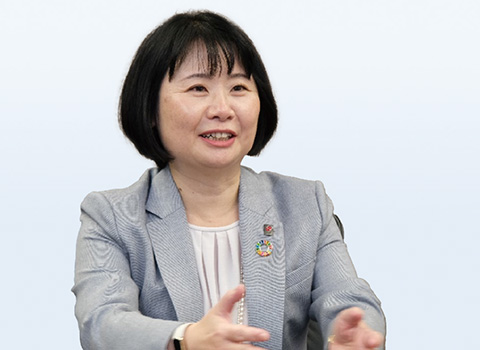
Shimokawa That is an example of the impact path of human capital leading to financial and corporate value. Our unique actions—My Purpose and new work styles—help individuals and groups, in addition to increasing the abilities of employees. This will produce added value for existing lines of business: improved quality of products and services as well as higher satisfaction for claim payments and other customer service situations. In turn, increased financial value will naturally follow. Moreover, our unique actions should improve our brand value. In other words, that is the reason stakeholders will choose SOMPO in the future, have positive expectations of SOMPO, and think SOMPO is great, exceptional, and highly capable. However, this is just one hypothetical path we are considering; we must prove that this actually is the case not only through visualization but also through quantification.
Although partial, we noted an unmistakable positive correlation between groups that implement My Purpose One-on-One and employee engagement. We must also consider how to measure pioneering effort and innovation in the future, but beyond that as well because we know there is a correlation between engagement and customer satisfaction and the ability to achieve organizational goals. We want to add these findings to our evidence.
Hara There are two non-numeric examples. One is that the world is beginning to learn about SOMPO’s dedication to human capital management. Although they do not yet believe that this translates into value, we are getting more media coverage, so people now know that we are working hard. Investors have also asked questions about My Purpose at IR meetings and general shareholders meetings. This is the first time that people in capital markets have asked about My Purpose.
The other example is the ability to recruit. In particular, we have noted a definite increase in our ability to recruit mid-career hires, that is, people who are not new graduates. We are considering how to measure this, but I already sense that the quality of new employees is improving.
Nawa We are talking about reliably measuring the parts of the impact path as well as how they are connected to output. That is a difficult task, but once we improve our understanding, we will have a better picture of this connection. Since the KPIs used to measure parts are still being developed, I believe our expectations will definitely increase as we demonstrate, through trial and error, that everything is a part of an impact path. The figures for both engagement and brand value are going up. That is one type of indirect evidence. Unfortunately, the P/B ratio* is below 1, which does not bolster the idea that real potential will lead to future value. I am looking forward to seeing how these parts will connect to market expectations in the future.
* Adjusted P/B ratio: an index calculated by dividing the share price by the adjusted consolidated net assets per share.
Toward Value Creation Distinct to SOMPO
Nawa On the topic of job-based employment, SOMPO has made it clear that every employee will build a career with personal integration, while choosing the right job at the right time. When people see our organization as a place that gives them strong opportunities for self-development, we will attract more people, which in turn will help them grow. I think that is fantastic! We see this as different from other job-based employment systems out there.
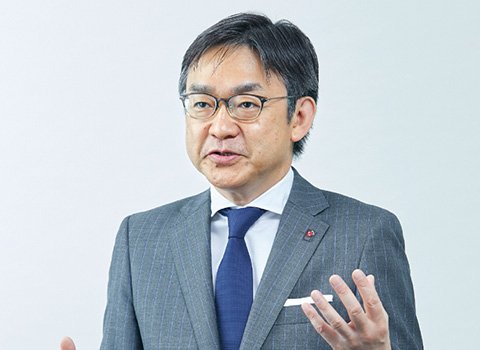
Hara If the typical Japanese-style employment (based on lifetime employment and repeated company-initiated reassignments) is known as “membership,” then we must consider our job-based employment to be “career autonomy. What we are trying to do is to create a system that can attract people who agree with SOMPO’s Purpose and want to work together to realize it. Then, people will decide for themselves to step forward and try to get a specific job. I really want to see us build this type of system.
Nawa What really impressed me was the SOMPO DNA series. Through these true-to-life stories, you learn the names of individuals who are flourishing and creating independent careers for themselves.
Shimokawa SOMPO DNA is one of several initiatives for disseminating the idea of purpose. To spread this idea further, we are taking practical steps, such as messages from top executives at Town Hall Meetings and My Purpose one-on-one training and workshops, using engagement to measure the effects of these initiatives, and linking them with PR campaigns. In SOMPO DNA, the employees are the “stars of the show,” with each one sharing their My Purpose and history. Although only five employees appeared in the paper publication, 100 employees from SOMPO Holdings as well as several operating companies are on the website version.
Nawa I admire the reach of SOMPO DNA. It gave me an image of people taking action themselves.
Nawa One more point: I believe that principles—that is, the principles that govern our behavior—are important. Purpose is as high as our North Star, but the principles that guide our daily actions are the foundation. This is akin to saying that discipline exists within aspiration. What do you think about SOMPO’s principles?
Hara Although perhaps a slightly different concept, SOMPO has three core values: The first is being mission-driven; the second is professionalism; and the third is diversity and inclusion. We intend to become a group that values these three things. To be mission-driven is to think and act with a sense of mission, which is the opposite of being valued for faithfully following orders under seniority-based, top-down systems, as is the case with the “membership” style of employment. Professionalism defines people who do their best in their current post to realize the company’s purpose based on their own purpose, rather than people who are capable of doing 80% of the general tasks the company asks them to do. Finally, there is diversity and inclusion. I think we should strive to become a group of people who have all three of these core values.
Nawa When I read SOMPO DNA, I feel that holding steady to unique, personal core values does not immediately take people to their purpose. Rather, it gives them confidence, convinces them of the reality of their accomplishments, and shows them the way to attaining purpose by continuing to go forward and have similar experiences.
I have another point to make about M&As and inorganic growth. If SOMPO does not have power—centripetal force— we cannot grow. So, first, we must create templates or procedures within SOMPO. Once these have been created, the core components will be transplanted to other companies, and everyone’s strengths will grow, which will result in value creation. For example, in both Nursing Care and P&C Insurance, if we have unique templates for visualizing risk and improving quality of life (QOL), I believe we can link the business areas and strengths that other companies have to our value creation. This is a more straightforward way than starting from scratch.
Shimokawa What we are envisioning with the Real Data Platform (RDP) is a good example of an initiative to create a template, expand it, and involve others. We are considering a business model that is different from any existing one, in which we find and form alliances with partners capable of co-creation, who we need to share our know-how-based solutions with, while operating as a nursing care business. For this process to work, we think M&As are necessary, not only in the sense of acquiring completed businesses in order to realize purpose, but also in the sense of acquiring procedures that will help to expand our platform. We have clarified what is necessary and what is missing to increase our market share as a platform provider, and are now discussing how to increase the scale and stage of overall business through M&As and by partnering with others.
Nawa Companies that are skilled at M&As and alliances have the ability to change other people and gain empathy. SOMPO has many different lines of business, and purpose is firmly rooted in each one. If we are able to understand that our purpose is also firmly rooted in the companies that we acquire, we will have gained “soft power” for the Sompo Group. In my view, the ability to change people, to immerse them in the SOMPO way of doing business and increase their value as employees, is more powerful than business synergy. This is neither job-based nor membership employment, but a kind of hybrid. However, if we gain a reputation as an organization where people are well-developed, our hybrid style of employment should be recognized around the world. I hope we can attract people from outside the Company by combining the best parts of a global job-based system with the Japanese membership style of employment. I believe our strength lies in making sure that acquired companies and partners have a firm understanding of our purpose and core values.
Hara It may take time, but I would like to continue to build that type of reputation.
Nawa We are counting on you. It would be nice to be able to say that companies like this exist in Japan, too. What amazes me is the variation and the amount of change over the last few years. Even though the company is large, these past few years since you on the new top management team took the helm have been wonderful. I want you to continue and to accelerate this work. That is what I ask of you, and at the same time it is my hope for the future. I think we are at a crossroads: whether it will even out or accelerate from here. So far, so good, but rather than be complacent, I am confident that you will work hard and that we will continue to pick up speed.













